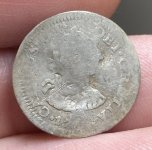I purchased a Mine Lab Explorer SE a year and a half ago and am having loads of difficulty determining what all the chatter is telling me. There is so much sound feedback that it's just over the top and confusing. The technology seemed to be exactly what I was looking for when hunting old sites that have deep coins. But in practice, the amount of chatter and sound feedback is extremely difficult to figure out. I figured there would be a learning curve but I am now hearing that it could take literally hundreds of field hours to figure out what this machine is telling me. I am not retired and therefore do not have that kind of practice time available.
Does anyone know if Mine Lab dealt with this problem in any of it's latest detectors or am I just out of luck? Other suggestions?
Thanks..Belay Off
Does anyone know if Mine Lab dealt with this problem in any of it's latest detectors or am I just out of luck? Other suggestions?
Thanks..Belay Off
Amazon Forum Fav 👍
Upvote
0


 So I broke down and went out and bought one.
So I broke down and went out and bought one.


